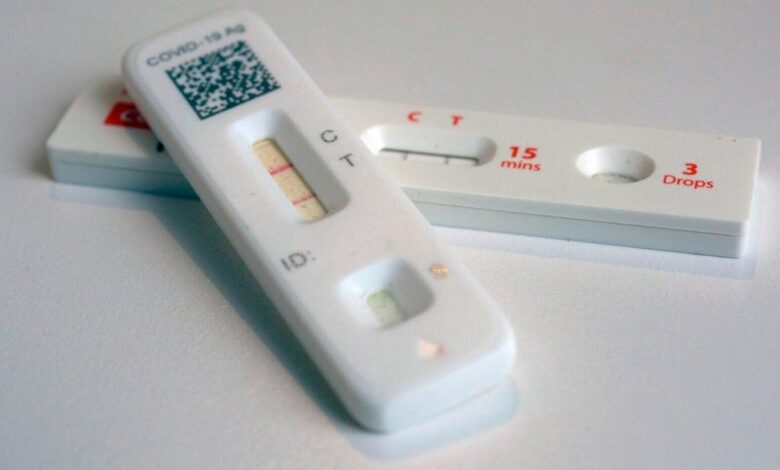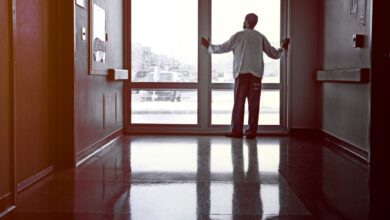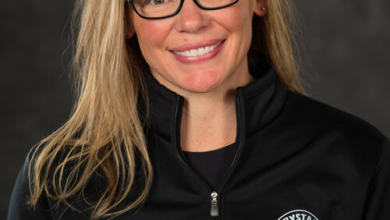Tips for using free at-home COVID-19 tests

Frank Bures
As of this writing, it seems easy to say that cases of COVID-19 are around currently and not rare. Fortunately, this run of COVID-19 is not making most sufferers as desperately sick as the initial alpha, delta and other strains did. But there still a few deaths occurring.
To confuse the picture, now influenza cases are increasing in this colder season. And other respiratory microbes are in the mix, like respiratory syncytial virus and mycoplasma pneumoniae.
Nasal and throat swab testing is the only certain way to differentiate among them. We do have COVID at-home kits, probably familiar to many readers, which are useful but not infallible. When we were under a public national emergency, tests were available for free from the federal government. But that was canceled May 11, and you had to buy them. Just in the last couple weeks, it was announced that these tests were again available from the federal government. More later on how to obtain them.
People are also reading…
A recent study published in the Journal of Clinical Infectious Diseases examined the technique needed in using these properly to get as accurate a result as possible.
With the omicron variants that are dominant now, it takes three to four days for the virus to produce enough of a “viral load” for the test to detect it. This antigen test swab detects the protein coating particles that go around the viral genetic material or RNA, not the actual RNA. The test for that is the molecular test.
The recommendation is to do a test in one to two days after symptoms appear. If negative, repeat tests every two days. A repeat test can become positive as the viruses multiply sufficiently.
For omicron, this seems maximum at about four days. Of course, like all medical experiences, that is not always true for everyone. It’s best to do at least three tests 48 hours apart to make sure of a negative result. One technique tip is to swab both nostrils thoroughly. If a test is positive, no more tests are needed. That’s enough indication to isolate.
If tests are negative, it is still possible you are COVID infected because the viral load hasn’t gotten high enough to register.
An alternative would be to find a health practitioner to get the molecular test for the RNA and maybe nasal swabs for the other viral varmints that inhabit that territory, especially flu. The reason to differentiate is that there are specific medicines for each organism if and when appropriate to modify the disease, not actually cure it.
We experienced a true-life example of the need for testing repetitions. For our family Thanksgiving gathering, one family member of three got COVID, with one being very sick. Dad tested negative on the first try but positive on the second. The others tested positive when they were a couple days into symptoms. We sent them take-home dinners.
The federal program to order free at-home tests during the public health emergency has been rekindled slightly as of a few weeks ago. The website COVIDtests.gov can again be accessed to order four tests per household and will now offer an additional four tests per household for anyone who has already ordered or eight tests for any household that hasn’t placed an order yet this fall.
For Minnesotans, there is a special opportunity for tests. The Minnesota Department of Health is offering eight tests per month per household. You can either go to that website or call the number 833-431-2053 to ask for them. I called it and got a very pleasant and helpful individual.
What are the benefits of doing COVID testing? First, it can mean you might be able to get the one medicine, Paxlovid, that can lessen its impact and possibility of long COVID. Second, it is a way to be considerate of the welfare of the people around you, like our own family members, who tried to keep us from getting infected. It’s one way to care for yourself and others at the same time.
We hope these tips on COVID home tests will help you not get testy if your test is negative. I have always been amazed at folks who are disappointed when they have tests of any kind done, and results come back normal. I always tell them normal is a result, and not a bad one at that.
Dr. Frank Bures, a semi-retired dermatologist, has worked Winona, La Crosse, Viroqua and Red Wing since 1978. He also plays clarinet in the Winona Municipal Band and a couple Dixieland groups.




